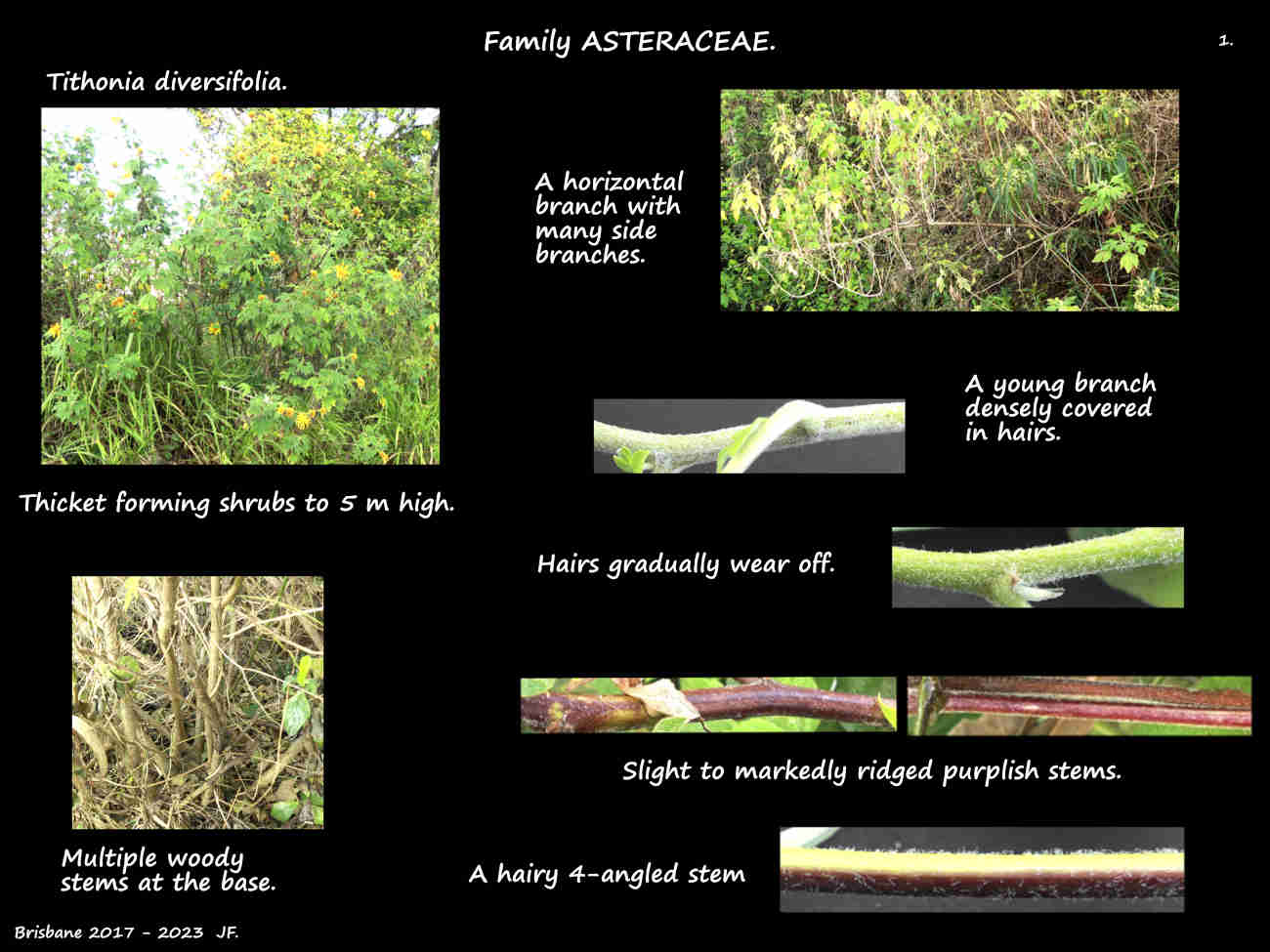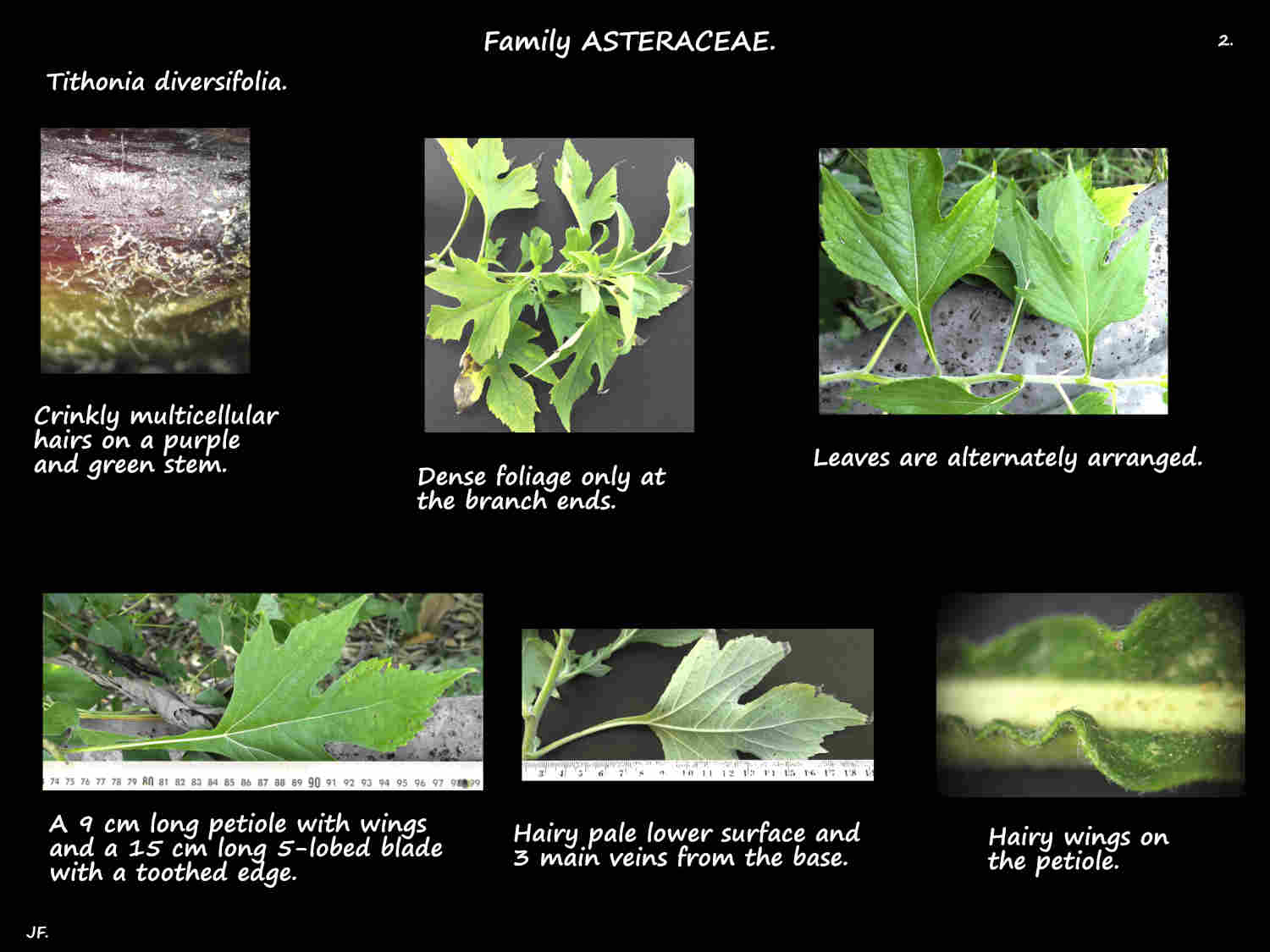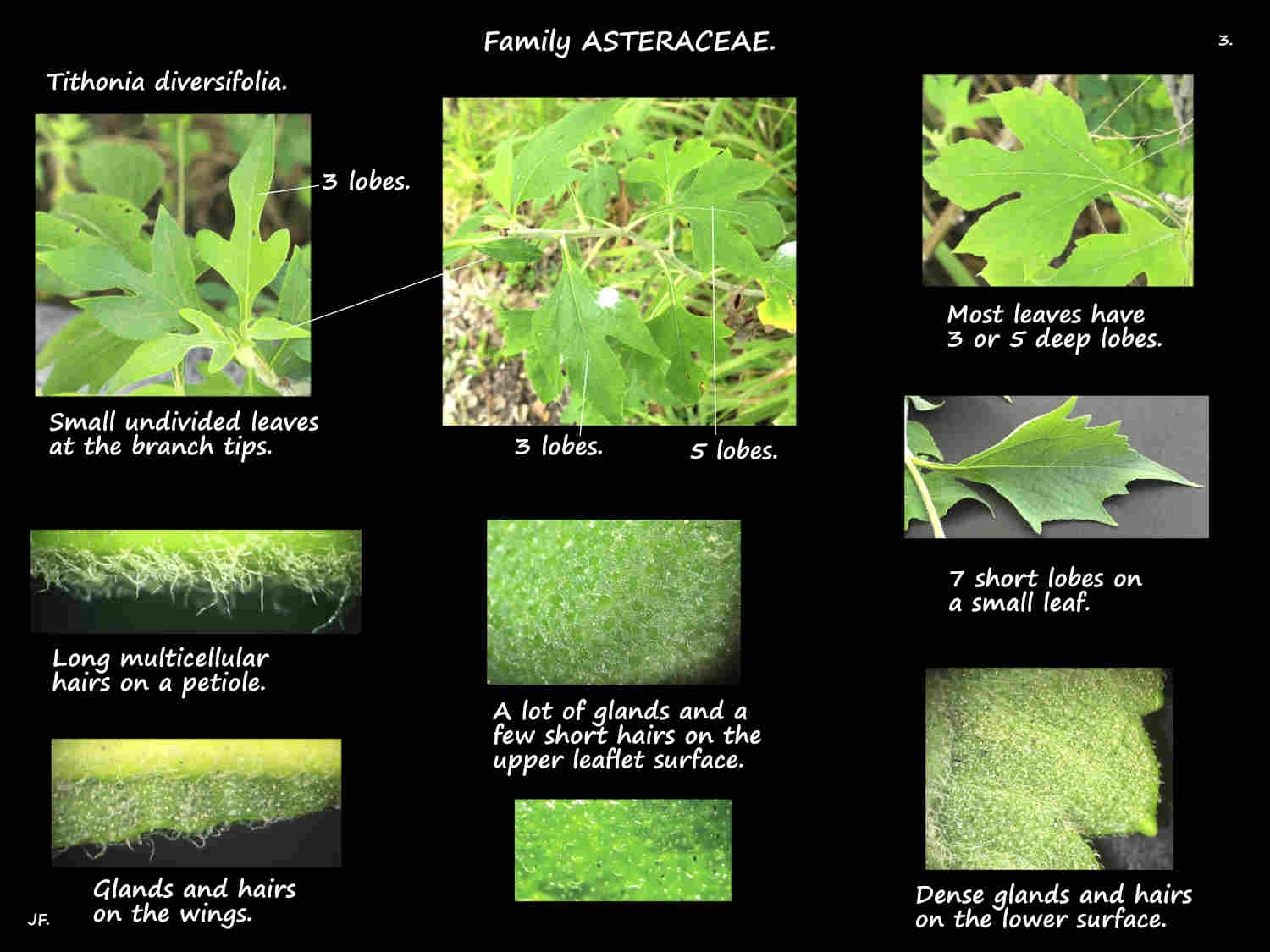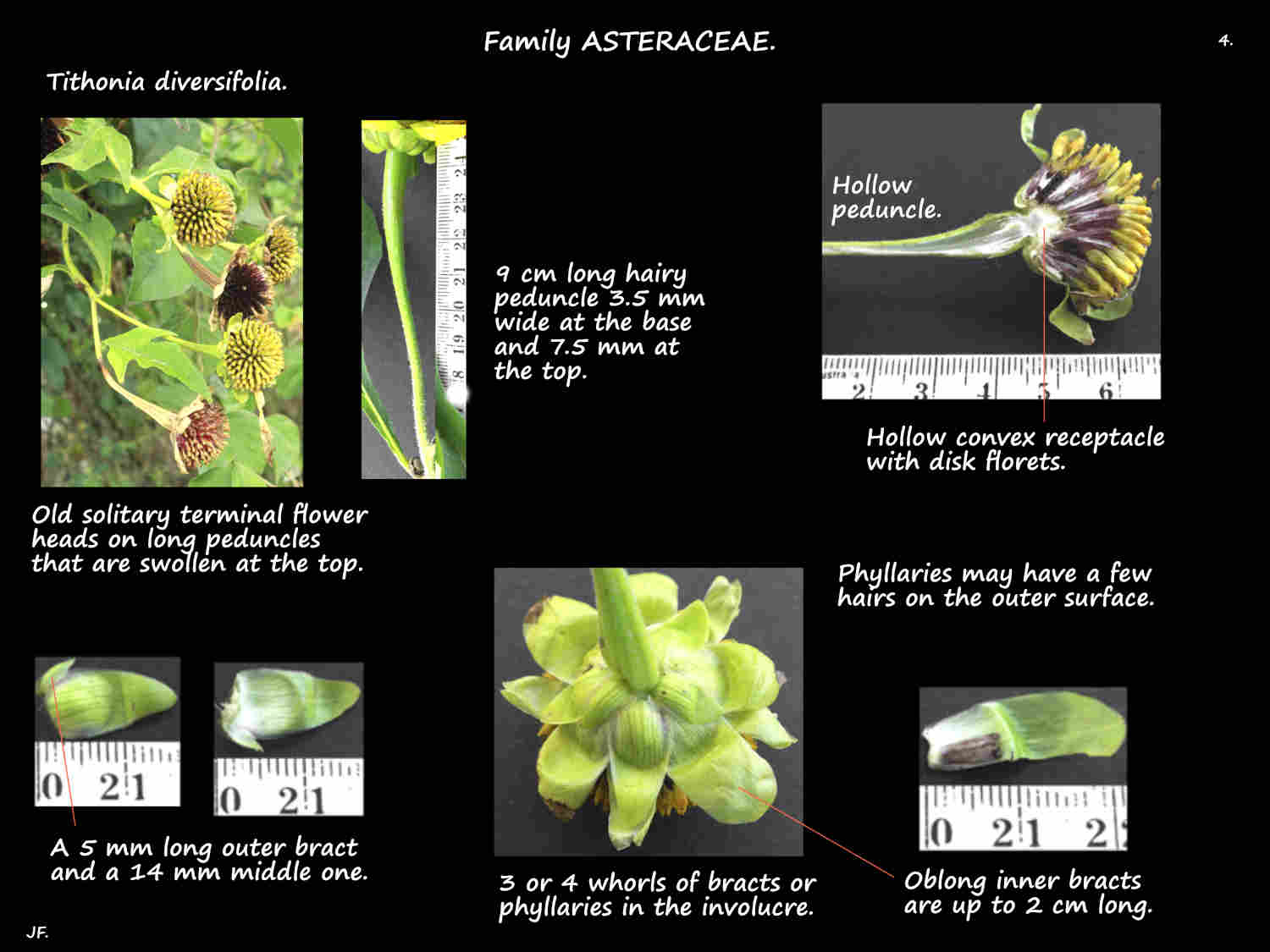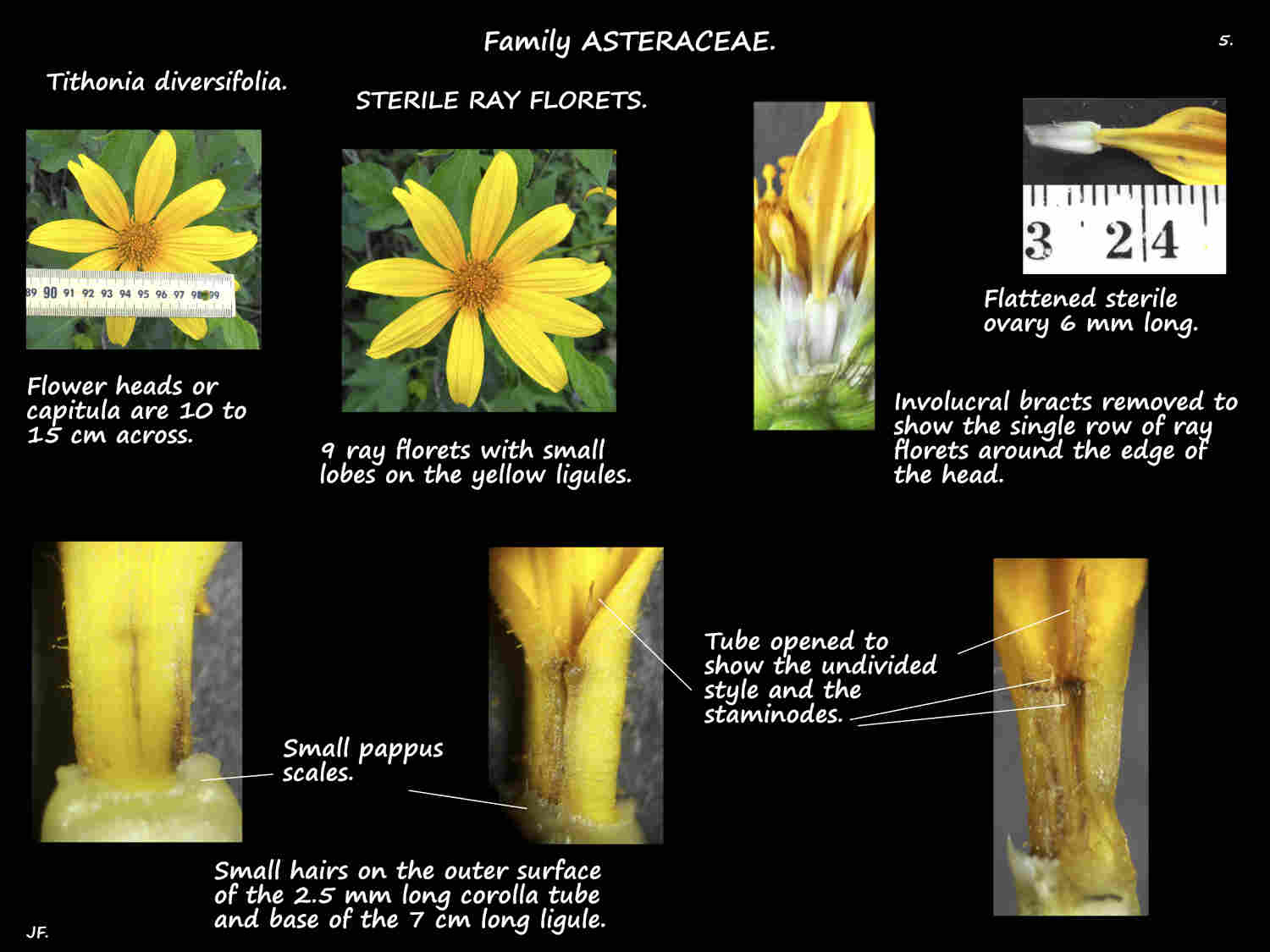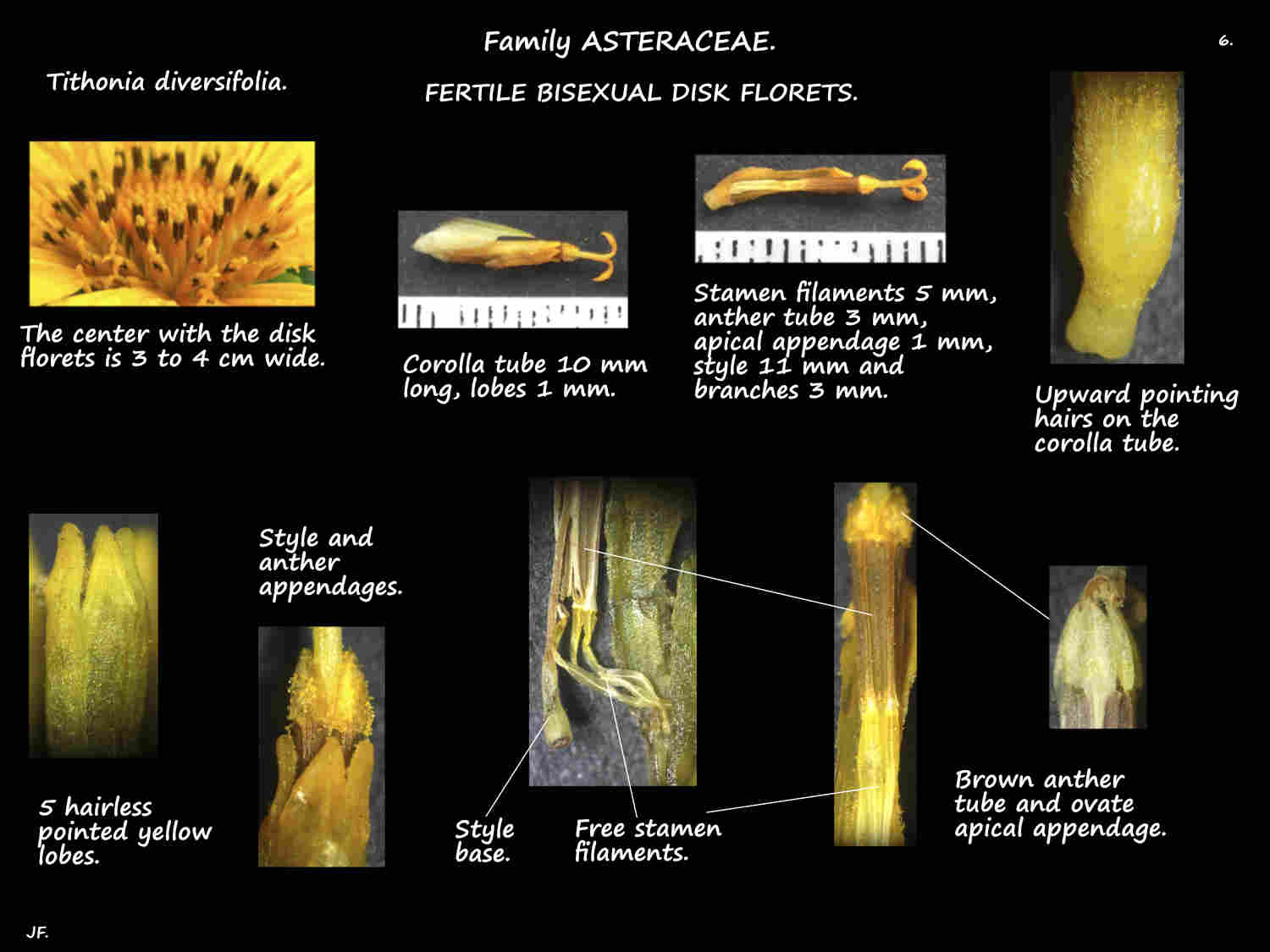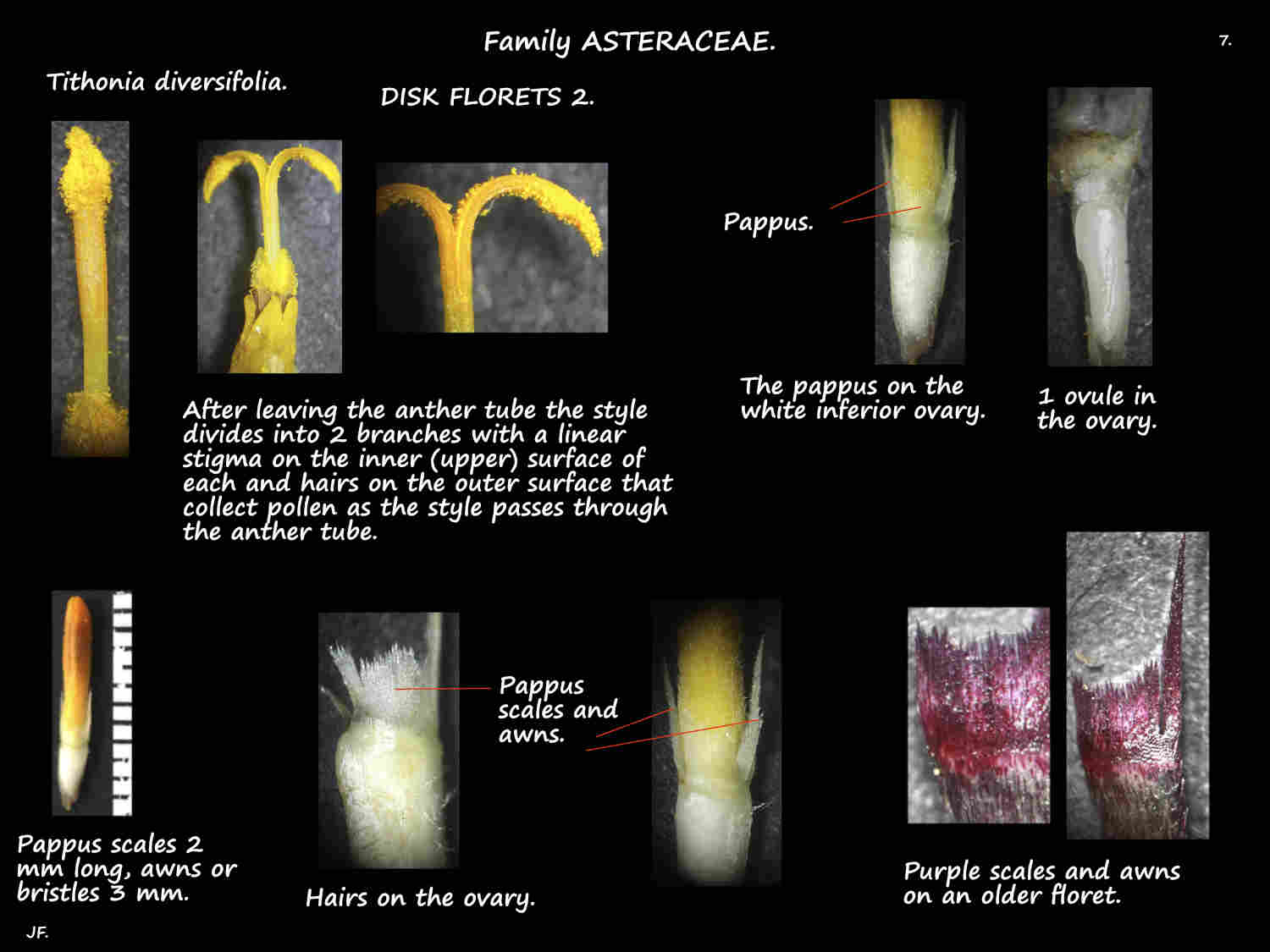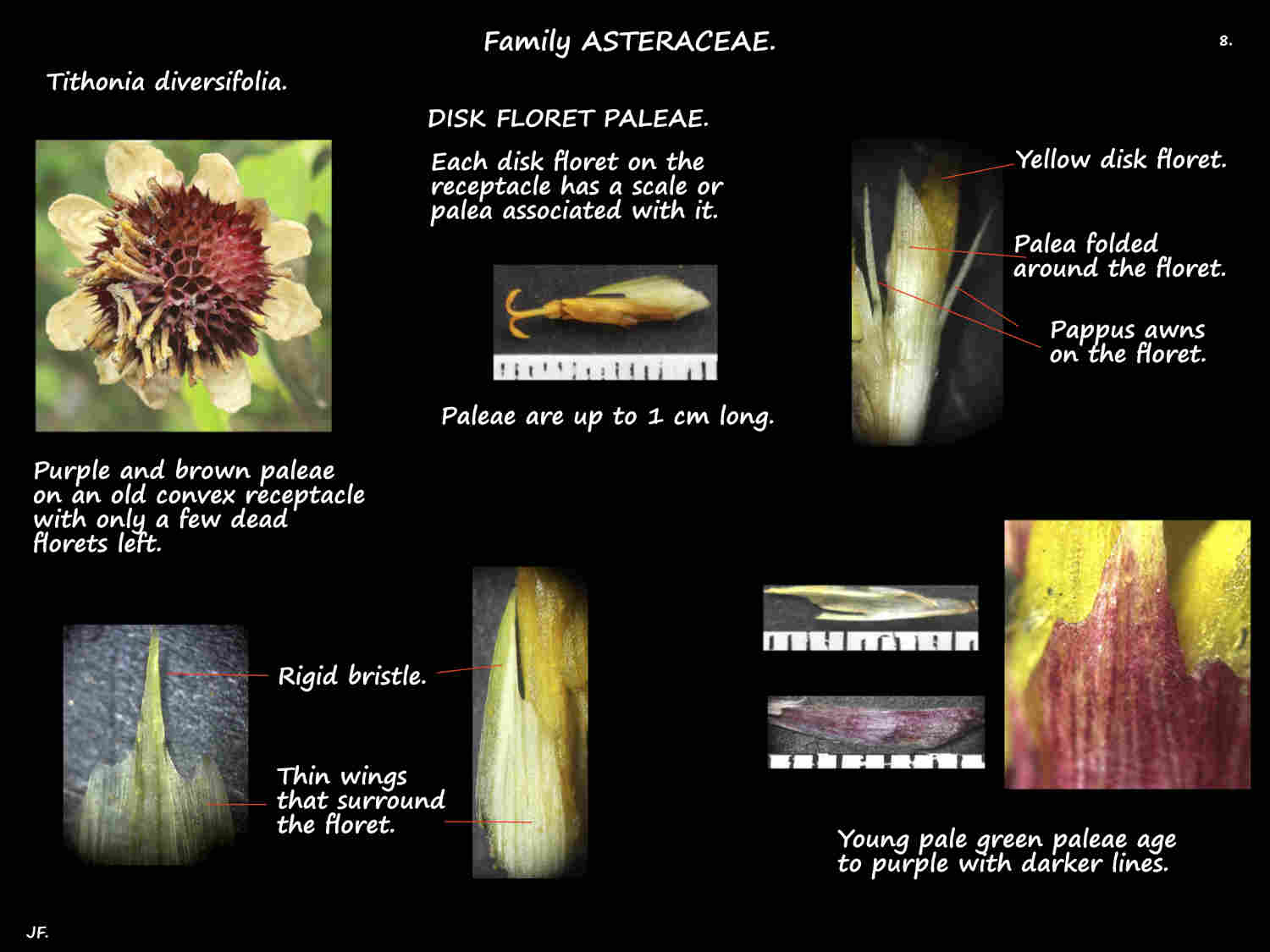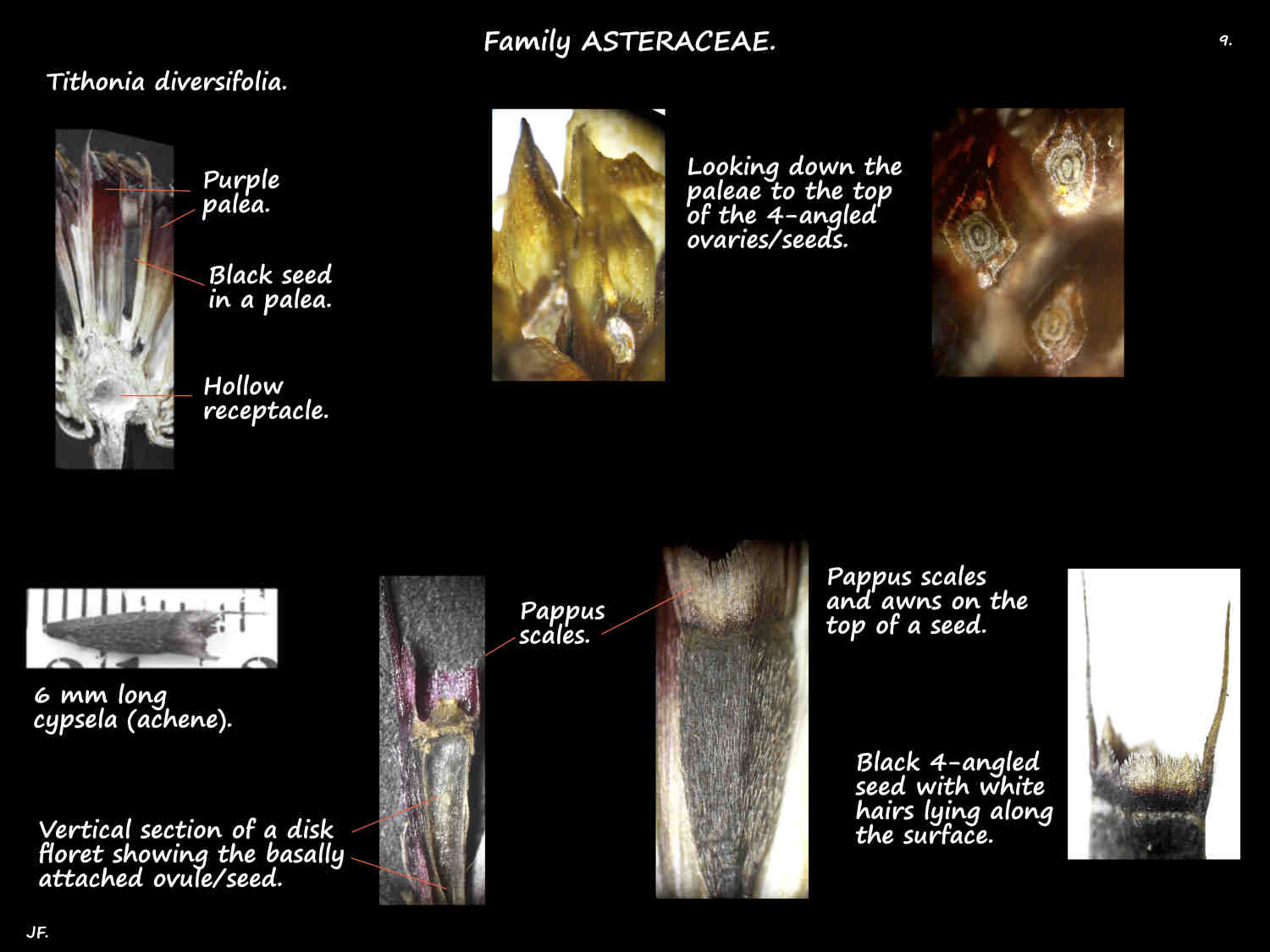Tithonia diversifolia.
The Japanese or Giant Mexican sunflower, from Mexico and Central America is naturalised in Australia.
Originally a garden plant they are now an environmental weed in Queensland.
Those seen around Brisbane are bushy branched perennial shrubs up to 4 or 5 m high in dense thickets.
The lower stems are woody and the upper branching ones are 4-angled.
Stems can be green and/or red and the dense white hairs on young stems are gradually lost.
The alternately arranged leaves are on petioles up to 10 cm long.
The base of the blade ususally runs onto the petiole as wings.
The wide ovate blades are typically around 7 to 15 (30) cm long and 7 to 15 (20) cm wide.
Some of the smaller upper leaves are entire but most have 3 to 5 (7) deep lobes.
The lobes have a pointed tip and sharp or blunt teeth on the edges.
There are glands on both surfaces and the upper green surface may have a few small hairs.
The lower surface is greyish to white due to the dense layer of hairs.
Inflorescences are a single flower head or capitulum on the main and side branches.
Heads are on a slightly hairy stalk or peduncle around 20 (10 to 30) cm long.
The top of the peduncle is hollow and it widens up to 5 to 10 mm across just under the head.
The heads are mostly 10 to 15 cm across and the central disk around 4 cm.
The involucre under the head has 3 or 4 rows of bracts or phyllaries.
The outer bracts are short (from 5 mm) and narrower than the inner oblong or ovate ones that are up to 20 mm long.
The green bracts have dark veins down them and there may be a few hairs on the outer surface.
The hollow convex receptacle holding the florets has scales or paleae around 1 cm long.
Each disk floret has a palea that has a rigid central spine or awn and shorter thinner wings that almost surround the floret.
Paleae may have a few hairs externally and they persist around the ripening seeds.
There are around 12 (8 to 15) sterile ray florets around the edge of the head.
Their corolla tube, around 2.5 mm long has a yellow ligule 7 to 8 cm long.
There are a few hairs on the outer surface of the corolla and the ligule tip has 3 small teeth.
The numerous yellow disk florets, 1 to 1.5 cm long have a tubular base and 5 short pointed lobes.
There are a few simple hairs at the base but none on the lobes.
Disk florets are bisexual and the 5 stamens have free filaments.
The anthers, with a free ovate apical appendage are loosely fused into a tube.
The inferior ovary has 1 ovule and a style that divides into 2 branches each with a linear stigma and tiny hairs.
The fruit are cypselae (loosely called achenes which come from a superior ovary).
Cypselae consist of the seed and a pappus of scales and bristles.
The black 4-angled seed, around 5 or 6 mm long has hairs lying along the surface.
The pappus at the top of the seed consists of a ring of thin scales 1 to 2 mm long with a fringed edge and
2 stiff awns or bristles 4 to 5 mm long.
The pappus may represent the calyx.
The palea around each seed remains on the receptacle after the seed falls off.
J.F.

